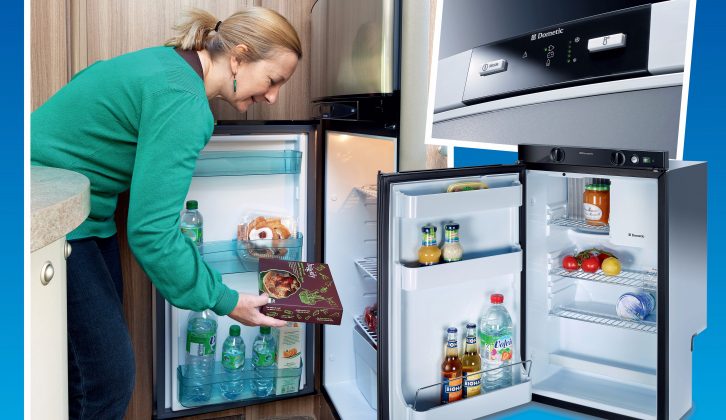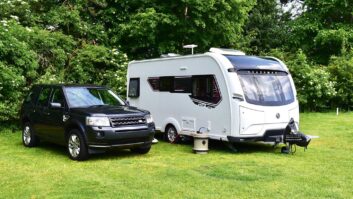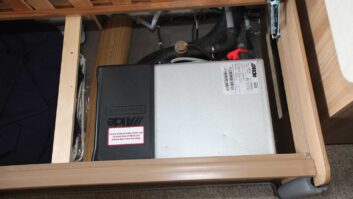A three-way caravan fridge is powered by a trio of supplies, and works via a different system to our conventional fridges at home.
Domestic units use a compressor to pressurise a gas that is then forced through small pipes – when it is allowed to expand it absorbs heat from its surroundings.
This heat is then carried to the outer section of the cooling circuit, where the heat is dissipated. That, in very simple terms, is how a compressor fridge operates.
Three-way fridges, on the other hand, use heat to create a ‘thermo syphon’ motion in the cooling circuit – as the heat is absorbed into that circuit, the gas inside rises and creates the flow through it.
The heat that is required to provide the energy can be created from a variety of power sources: 12V DC when the engine is running, 230V AC when on electric hook-up, and gas when not on hook-up or when the caravan is unhitched from the tow car or its engine is off.
Look out for blockages
The downside of a three-way – or an absorption fridge, to give it its proper name – is that it’s not the most efficient system.
This means that it takes longer to cool down initially, and will require more energy to keep the temperature down (although this can be offset to some extent with better insulation).
Compressor fridges, on the other hand, are more energy-efficient and cool faster. However, they can only be powered by an electrical source – either 12V DC or 230V AC – rather than by a gas alternative.
There is a problem with running a fridge on gas, and it stems from the fact that only a small flame is required (most three-way fridges require somewhere between 100W and 150W of energy to operate). Because of this, the metering jet is a very tiny aperture and can easily become blocked.
In contrast, the air holes are quite large – and small spiders are rather fond of making their nests in the base of the burner assembly!
Consequently, this restricts air flow and causes a fuel-rich mixture to appear at the burner. This in turn creates a dirty flame that generates a lot of soot, and carbon monoxide – which, of course, is deadly.
Stay safe – get yours serviced!
Fortunately, the solution is quite simple: a caravan fridge needs its gas burner and metering jet cleaned routinely, to remove any sooty deposits that may have started to build up around the flue.
An annual service is advised by both Dometic and Thetford for a fridge that gets average use on gas.
More frequent servicing is necessary if it runs extensively from the caravan’s LPG supply – for example, if you frequent rallies or stay off-site.
Many owners mistakenly believe that the fridge will be serviced during an annual caravan service, but this is rarely the case.
In my workshop, I service the gas side of fridges if possible without removing the unit, but most workshops don’t do this as a standard part of an inspection or service.
As the customer, you need to ask whether it will be done; if not, ask for it. There will obviously be an additional charge – but it may just save your life.
An annual caravan fridge service is advised by both Dometic and Thetford









